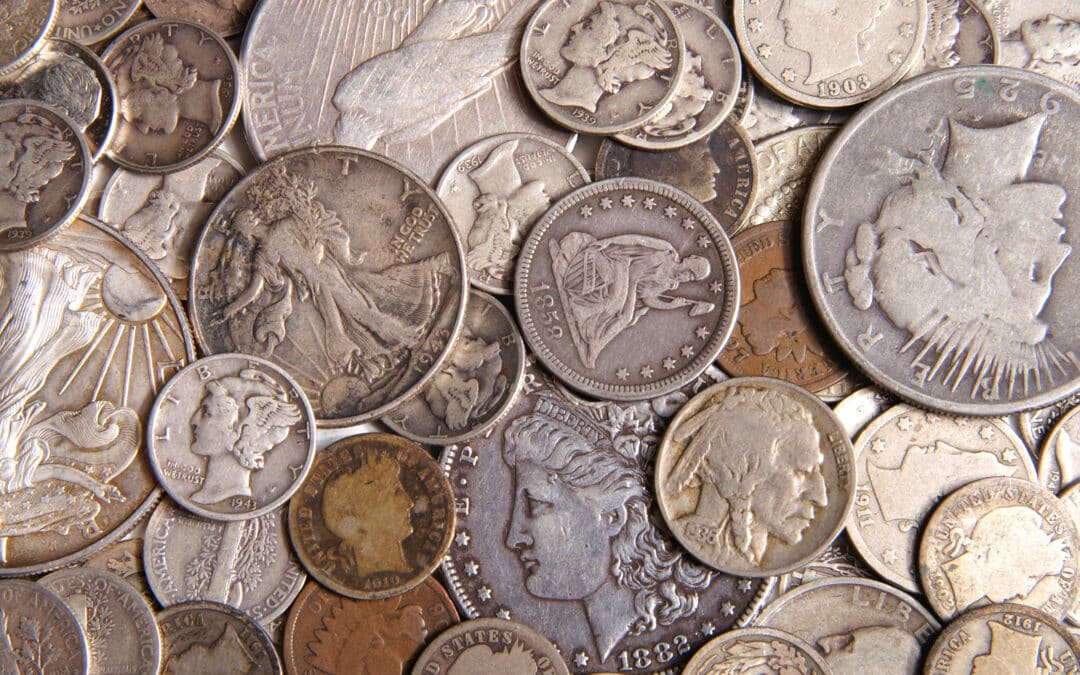The rising cost of metals like copper, nickel and zinc has a broad impact across the economy, including how much it costs to make a penny, nickel and dime.
A recent report by the U.S. Mint examines the need to adopt new alloys for coin production to save millions of dollars per year.
The Secretary of the Treasury’s biennial report on U.S. Mint coin production, released last month, revealed that it cost almost three cents to make one cent: the cost of manufacturing one penny is now 2.7 cents. Similarly, it now costs more than ten cents to make a nickel. The U.S. Mint sells coins to Federal Reserve Banks to raise money to help finance the national debt, but the sale of pennies and nickels is now a money losing operation.
Increasing Raw Material Costs
Raw material costs have been going up across all commodity classes for the past two years, reports the online newsletter Supply Chain Dive. These price increases are affecting the cost of coin production, like everything else. The U.S. Mint report states this is the 17th consecutive fiscal year that the unit cost for both pennies and nickels remained above the face value of the coins. The past two years, however, have seen more significant increases due to rising metal prices.
The mint compensates for the losses from selling pennies and nickels by making money on the sale of dimes and quarters. For fiscal year 2022, it cost five cents to produce a dime and 11 cents to make a quarter. In the wake of rising raw material costs, most manufacturers have been forced to raise their prices or reformulate their products. The U.S. Mint, however, cannot raise the price of a penny or a nickel. Consequently, the Mint in its report urges Congress to authorize the use of other metal alloys in coins to defray these losses.
New Metal Alloys Explored
The Mint has been studying options for new metal alloys for years to address cost and supply chain concerns. The most recent report states that, if approved by Congress, it could start using 80/20 Cupronickel in nickels, dimes, quarters, and half dollars within a year, saving about $12 million annually. Another promising alloy is C99750T-M, a mix of copper, nickel, zinc and manganese. Moving to this alloy could save anywhere from almost $13 million to $51 million per year.
Moving to copper plated steel (CPS) for pennies is another change the Mint is evaluating. Pennies are now made of copper plated zinc (CPZ). Pennies made from CPS may cost more than pennies made from CPZ, however, the current CPZ penny has only one supplier of planchets (the blank rounds pressed into coins) creating a supply chain concern. Moving to CPS pennies offers the potential for multiple suppliers for a more secure pipeline, avoiding cost and supply chain problems in the future.
Last month, bipartisan legislation was reintroduced to allow the Mint to adjust the metal content of coins to save money. “The Coin Metal Modification Authorization and Cost Savings Act” authorizes the Mint to modify the metallic composition of circulating coins if the modification will reduce costs, allow for a seamless transition into circulation, and have minimal impact on the public. Impact on the public includes considerations such as if the coins could be accepted in current vending machines.
Precious Metals and Metal Alloys – Determining How Coins are Made
According to the U.S. Mint website, the composition of metal coins has changed many times over the past 200 plus years. In determining the metallic composition of a coin, there are two considerations—value and durability. Some metal mixes were tried on a temporary or experimental basis, while others have been used for decades. Coins used to be made from precious metals like silver and gold. Smaller denomination coins (like the now out of circulation half cent and two cent coins) were traditionally made from bronze and copper. The “red metals” were less valuable than precious metals, but for coins used heavily in everyday commerce, they made for a stronger and more durable coin.
As all these metals became more expensive, the Mint started replacing them with longer lasting and cheaper metals and alloy mixes. The 1970 half dollar was the last coin to include silver. Today’s coins are made from nickel, copper and zinc. Additionally, instead of using one metal for some coins, multiple metals are pressed together into layers, creating a “clad” coin. The quarter for instance is a clad coin, with the outside layers made of a nickel and copper mixture that is silver in color. A layer of copper is in the middle of a quarter. The layers of metals help the coin last longer.
Supply Chain and Raw Material Prices Peak Interest in “Change”
The opportunity to save money has some Members of Congress urging adoption of metal modifications. Last month, the bipartisan efforts to modify coin composition were introduced in both the U.S. House of Representatives and the U.S. Senate. Similar legislation has been introduced in a bipartisan way in previous years but has not yet become law. In their press release announcing their effort last month, Sen. Maggie Hassan (D-NH) said “it’s just common-cents to use every tool at our disposal.” Sen. Joni Ernst (R-IA) added “It’s absolute non-cents… to spend ten cents to make just one nickel.”
About ScrapWare Corporation: Since 1989, Rockville, Maryland-based ScrapWare Corporation has been the software of choice for the recycling industry. Its ease of installation and simplicity saves users time and money while helping them achieve compliance and maintain accurate business insights. With state-of-the-art functionality that‘s tailored to each organization’s unique requirements, ScrapWare is an advanced dynamic software solution that alleviates the most pressing recycling industry worries. For more information, please call (301) 517-8500 or visit https://www.scrapware.com/.

